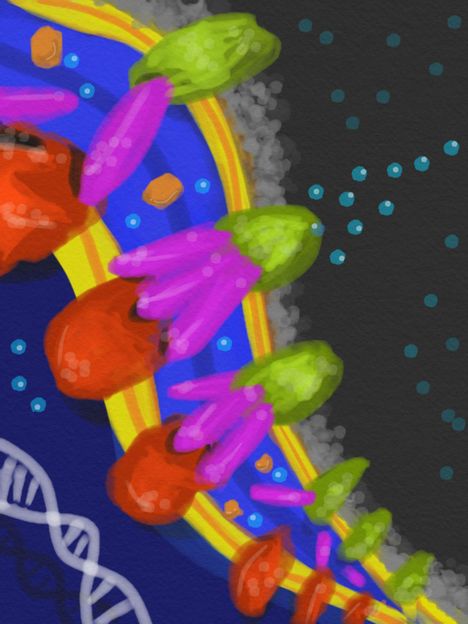Gene that influences the ability to remember faces
New findings suggest the oxytocin receptor, a gene known to influence mother-infant bonding and pair bonding in monogamous species, also plays a special role in the ability to remember faces. This research has important implications for disorders in which social information processing is disrupted, including autism spectrum disorder. In addition, the finding may lead to new strategies for improving social cognition in several psychiatric disorders.
A team of researchers from Yerkes National Primate Research Center at Emory University in Atlanta, the University College London in the United Kingdom and University of Tampere in Finland made the discovery, which will be published in an online Early Edition of Proceedings of the National Academy of Sciences.
According to author Larry Young, PhD, of Yerkes, the Department of Psychiatry in Emory's School of Medicine and Emory's Center for Translational Social Neuroscience (CTSN), this is the first study to demonstrate that variation in the oxytocin receptor gene influences face recognition skills. He and co-author David Skuse point out the implication that oxytocin plays an important role in promoting our ability to recognize one another, yet about one-third of the population possesses only the genetic variant that negatively impacts that ability. They say this finding may help explain why a few people remember almost everyone they have met while others have difficulty recognizing members of their own family.
Skuse is with the Institute of Child Health, University College London, and the Great Ormond Street Hospital for Children, NHS Foundation Trust, London.
Young, Skuse and their research team studied 198 families with a single autistic child because these families were known to show a wide range of variability in facial recognition skills; two-thirds of the families were from the United Kingdom, and the remainder from Finland.
The Emory researchers previously found the oxytocin receptor is essential for olfactory-based social recognition in rodents, like mice and voles, and wondered whether the same gene could also be involved in human face recognition. They examined the influence of subtle differences in oxytocin receptor gene structure on face memory competence in the parents, non-autistic siblings and autistic child, and discovered a single change in the DNA of the oxytocin receptor had a big impact on face memory skills in the families. According to Young, this finding implies that oxytocin likely plays an important role more generally in social information processing, which is disrupted in disorders such as autism.
Additionally, this study is remarkable for its evolutionary aspect. Rodents use odors for social recognition while humans use visual facial cues. This suggests an ancient conservation in genetic and neural architectures involved in social information processing that transcends the sensory modalities used from mouse to man.
Skuse credits Young's previous research that found mice with a mutated oxytocin receptor failed to recognize mice they previously encountered. "This led us to pursue more information about facial recognition and the implications for disorders in which social information processing is disrupted." Young adds the team will continue working together to pursue strategies for improving social cognition in psychiatric disorders based on the current findings.
Most read news
Other news from the department science

Get the life science industry in your inbox
By submitting this form you agree that LUMITOS AG will send you the newsletter(s) selected above by email. Your data will not be passed on to third parties. Your data will be stored and processed in accordance with our data protection regulations. LUMITOS may contact you by email for the purpose of advertising or market and opinion surveys. You can revoke your consent at any time without giving reasons to LUMITOS AG, Ernst-Augustin-Str. 2, 12489 Berlin, Germany or by e-mail at revoke@lumitos.com with effect for the future. In addition, each email contains a link to unsubscribe from the corresponding newsletter.
Most read news
More news from our other portals
Last viewed contents
Estación_de_Fotobiología_Playa_Unión

E. coli bacteria's defense secret revealed
Felicitex Therapeutics and Selvita Initiate Strategic Collaboration to Target Cancer Quiescence

Faecal Pollution: DNA Uncovers Culprit - CSI and forensics can be used to uncover not only serial killers but also the cause of water pollution
Chinese_Mental_Health_Association
Catalent Invests $7.3 Million in Italy - Expands Softgel Encapsulation and Packaging Capabilities in Support of Consumer Health

Bioluminescence - the natural glow - How glowing molecules can also be used in industry
2006 Life Science Industry Awards Finalists
Category:National_Institutes_of_Health_images
Energy sensor as potential target for cancer drugs identified
VaxGen Raises USD 79M Through Sale of Interest in Overseas Biopharmaceutical Manufacturing Facility























































